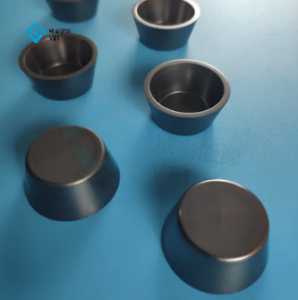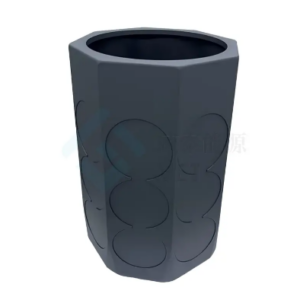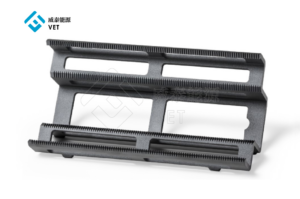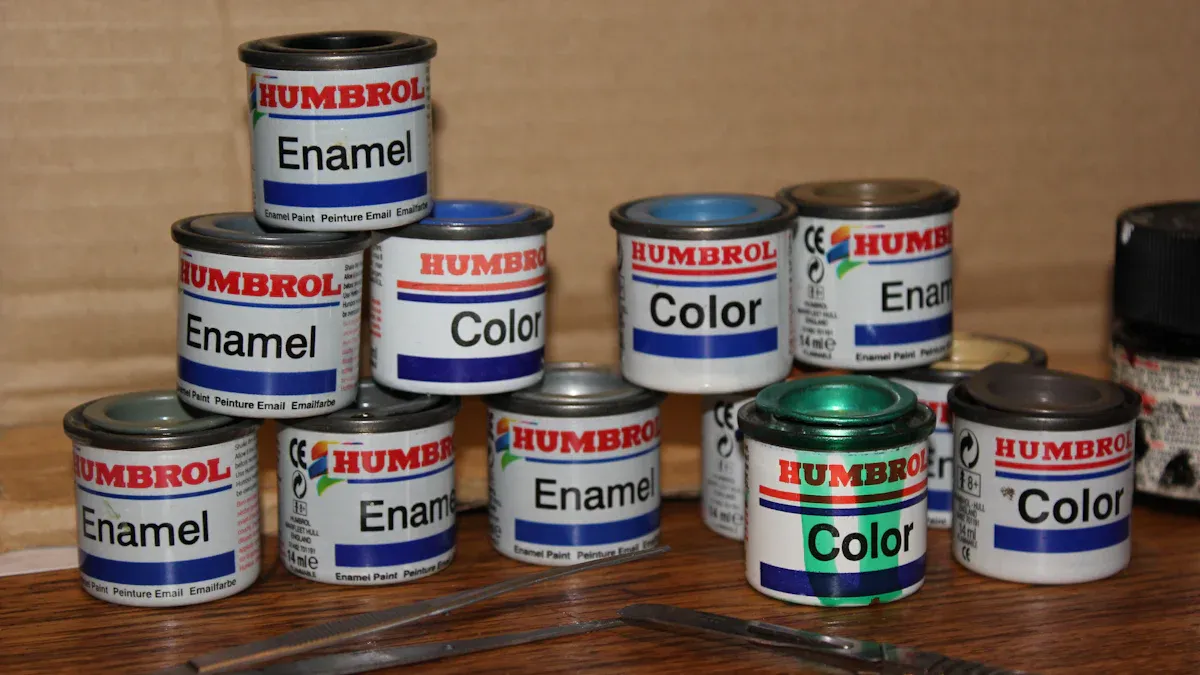
CVD TAC COATING provides outstanding hardness and resistance to high temperatures. In certain industries, CVD SIC COATING or other alternatives may be selected to meet specific chemical or budgetary needs. Important considerations such as the application environment, substrate compatibility, and required performance help determine whether CVD TAC COATING, TAC COATING, CVD SIC COATING, or other protective solutions are the best fit.
Tiras de Chaves
- Revestimento de DCV TaC offers exceptional hardness, high temperature resistance, and strong chemical protection, making it ideal for parts exposed to extreme conditions and complex shapes.
- Other coatings like PVD, thermal spray, nitriding, DLC, and oxide coatings serve different needs such as lower cost, heat-sensitive materials, large surfaces, or low friction, so choose based on your specific application and budget.
- Although CVD TaC coating costs more upfront, its durability and long lifespan reduce maintenance and replacement costs, providing better value for demanding environments.
What is CVD TaC Coating?
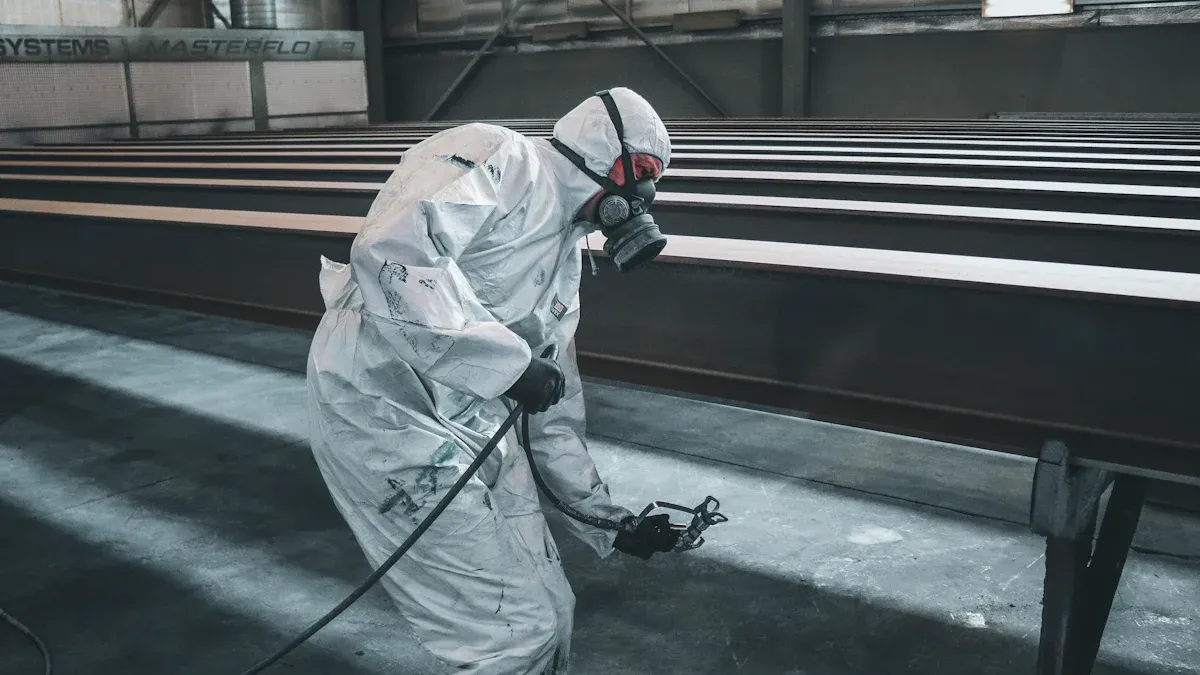
Definition and Process
Revestimento de DCV TaC stands for Chemical Vapor Deposition Tantalum Carbide coating. This process uses a chemical reaction to deposit a thin layer of tantalum carbide onto a substrate. The process takes place in a high-temperature chamber. Engineers introduce gases containing tantalum and carbon. These gases react on the surface of the part, forming a hard, protective layer. The CVD TaC coating process creates a uniform and dense coating. This method works well for complex shapes and internal surfaces.
Note: CVD TaC coating often provides better coverage than many other coating methods, especially for parts with intricate geometries.
Main Protective Features
CVD TaC coating offers several important protective features.
- It delivers exceptional hardness, which helps resist wear and abrasion.
- The coating withstands very high temperatures, making it suitable for harsh environments.
- It protects against corrosion from chemicals and oxidation.
- The coating bonds strongly to the substrate, which increases durability.
Many industries use CVD TaC coating for tools, aerospace parts, and components exposed to extreme conditions. The coating extends the lifespan of these parts and reduces maintenance needs.
Engineers often choose CVD TaC coating when they need a balance of hardness, temperature resistance, and chemical protection.
Overview of Other Protective Coating Technologies
PVD (Physical Vapor Deposition) Coatings
PVD coatings use a physical process to deposit thin films onto surfaces. Engineers place the part in a vacuum chamber. They heat or sputter a solid material, which then turns into vapor. This vapor settles on the part and forms a hard, thin layer. PVD coatings often improve wear resistance and reduce friction. Many industries use PVD for cutting tools, medical devices, and decorative finishes.
PVD coatings usually operate at lower temperatures than CVD, making them suitable for heat-sensitive materials.
Thermal Spray Coatings
Thermal spray coatings involve spraying melted or heated materials onto a surface. Technicians use a spray gun to apply metals, ceramics, or polymers. The coating forms a thick, protective layer. Thermal spray works well for large parts and repairs. It provides good resistance to wear and corrosion.
- Common uses include turbine blades, engine parts, and industrial rollers.
Nitriding
Nitriding is a heat treatment that diffuses nitrogen into the surface of a metal. This process creates a hard, wear-resistant layer. Nitriding does not add a separate coating but changes the surface itself. It works best for steel and some alloys. Many manufacturers use nitriding for gears, crankshafts, and dies.
Diamond-Like Carbon (DLC) Coatings
DLC coatings contain carbon atoms arranged in a structure similar to diamond. These coatings offer high hardness and low friction. DLC coatings also resist wear and chemical attack. Engineers often use DLC for automotive parts, cutting tools, and medical implants.
Oxide Coatings (e.g., Al2O3, SiO2)
Oxide coatings use compounds like aluminum oxide (Al2O3) or silicon dioxide (SiO2). These coatings protect against corrosion, wear, and high temperatures. Oxide coatings often appear in electronics, aerospace, and chemical processing equipment.
Note: Each coating technology offers unique benefits for specific applications.
CVD TaC Coating vs. Other Coatings: Side-by-Side Comparison
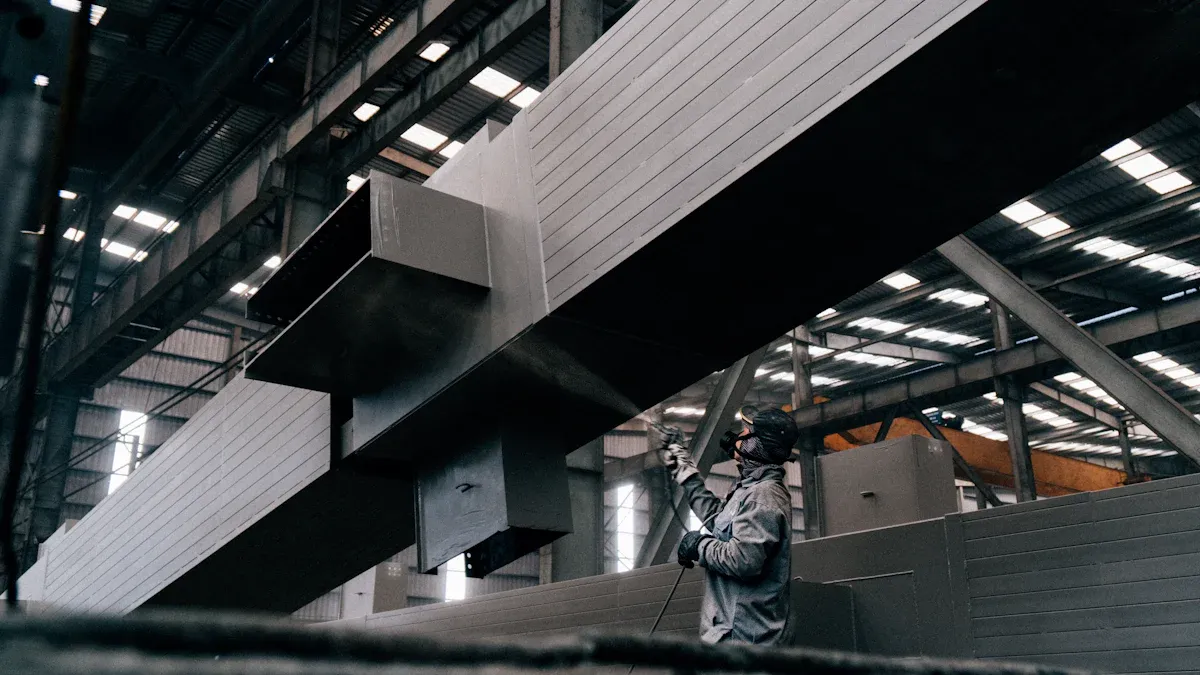
Performance: Hardness, Temperature Resistance, Wear, Corrosion
Engineers often compare protective coatings based on how well they handle tough conditions. CVD TAC COATING stands out for its high hardness. It protects surfaces from scratches and dents. This coating also works well at very high temperatures. Many other coatings, like PVD and DLC, offer good hardness, but they may not perform as well in extreme heat.
Thermal spray coatings provide strong wear resistance. They work best for large surfaces. Nitriding changes the surface of steel to make it harder, but it does not add a new layer. Oxide coatings, such as Al2O3, resist corrosion and heat, but they may not match the hardness of CVD TAC COATING.
Tip: For parts exposed to both high heat and heavy wear, CVD TAC COATING often gives the best protection.
Durability and Lifespan
Durability measures how long a coating lasts before it wears out. CVD TAC COATING forms a dense and uniform layer. This layer bonds tightly to the base material. As a result, it stays in place even under stress. Many users report that parts with this coating last much longer than those with other coatings.
PVD coatings are thin and can wear off faster in harsh environments. Thermal spray coatings are thicker, but they may chip or crack over time. Nitriding creates a hard surface, but the effect is limited to certain metals. DLC coatings resist wear, but they can be sensitive to impact. Oxide coatings protect against corrosion, but they may not last as long under heavy mechanical loads.
Application Suitability: Industries, Materials, Environments
Different industries need different types of protection. CVD TAC COATING works well in aerospace, chemical processing, and tooling. It protects parts that face high temperatures and corrosive chemicals. This coating also fits complex shapes and internal surfaces.
PVD coatings suit medical devices and decorative items. They work best on heat-sensitive materials. Thermal spray coatings cover large parts, such as turbine blades and rollers. Nitriding is common in automotive and machinery parts made from steel. DLC coatings serve in automotive, medical, and cutting tool applications. Oxide coatings appear in electronics and chemical equipment.
- CVD TAC COATING: Best for extreme environments and complex parts.
- PVD: Good for thin, decorative, or heat-sensitive applications.
- Thermal Spray: Ideal for large, worn, or repairable surfaces.
- Nitriding: Suits steel gears and shafts.
- DLC: Works for low-friction and wear-resistant needs.
- Oxide: Protects against corrosion and electrical wear.
Cost and Practical Considerations
Cost plays a big role in choosing a coating. CVD TAC COATING often costs more than other options. The process uses high temperatures and special equipment. However, the longer lifespan can save money over time.
PVD coatings cost less and use lower temperatures. They fit projects with tight budgets. Thermal spray coatings vary in price, depending on the material and thickness. Nitriding is cost-effective for steel parts. DLC coatings can be expensive, but they offer unique benefits. Oxide coatings usually cost less and provide good value for corrosion protection.
Note: When choosing a coating, consider both the upfront cost and the long-term savings from reduced maintenance and longer part life.
Pros and Cons Table: CVD TaC Coating vs. Other Coatings
Escolhendo a direita revestimento protector depends on the needs of each application. The table below shows the main pros and cons of CVD TAC COATING and other popular coatings. This comparison helps engineers and decision-makers select the best option for their projects.
| Tipo de revestimento | Pros | Cons |
|---|---|---|
| CVD TaC Coating | – High hardness – Excellent temperature resistance – Strong chemical protection – Good for complex shapes | – Higher cost – Needs high-temperature process – Not ideal for all materials |
| PVD Revestimento | – Lower process temperature – Good wear resistance – Decorative finishes | – Thinner layer – Less heat resistance – May wear off faster |
| Thermal Spray | – Thick coating – Good for large parts – Repair friendly | – Can chip or crack – Surface may be rough |
| Nitriding | – Hardens steel – Custo-efetivo – No added layer | – Limited to certain metals – Lower corrosion resistance |
| DLC Coating | – High hardness – Low friction – Chemical resistance | – Sensitive to impact – Can be expensive |
| Oxide Coating | – Good corrosion resistance – Electrical insulation – Affordable | – Lower hardness – May not last under heavy wear |
Tip: CVD TAC COATING works best for parts that face extreme heat and wear. Other coatings may suit projects with lower budgets or less demanding conditions.
How to Choose: Decision Factors
When to Select CVD TaC Coating
Engineers often choose CVD TAC COATING for parts that face extreme environments. This coating works best when a component must handle high temperatures, strong chemicals, or heavy wear. Aerospace and chemical processing industries rely on this coating for its durability. Complex shapes or internal surfaces also benefit from this method because the coating covers every area evenly.
- High-temperature operations
- Exposure to corrosive chemicals
- Need for maximum wear resistance
- Parts with intricate or internal features
Tip: Select CVD TAC COATING when long-term performance and protection matter more than initial cost.
When to Consider Alternative Coatings
Some projects do not need the advanced features of CVD TAC COATING. In these cases, Revestimentos alternativos pode oferecer um melhor valor ou atender às necessidades específicas. Por exemplo, os revestimentos de PVD funcionam bem para acabamentos decorativos ou materiais sensíveis ao calor. Os revestimentos de spray térmicos protegem superfícies grandes e permitem reparos fáceis. A nitridação melhora a superfície das peças de aço sem adicionar uma nova camada. Os revestimentos DLC reduzem o atrito em partes móveis. Os revestimentos de óxido fornecem resistência a corrosão acessível.
- Projetos sensíveis ao orçamento
- Superfícies grandes ou facilmente desgastadas
- Peças de aço que precisam de endurecimento da superfície
- Aplicações que precisam de baixo atrito ou isolamento elétrico
Nota: sempre corresponda ao revestimento com as demandas do aplicativo, não apenas o material ou o custo.
O revestimento TAC CVD se destaca por alta dureza e resistência à temperatura. Outros revestimentos podem atender a diferentes necessidades ou orçamentos. Os engenheiros devem corresponder ao revestimento ao aplicativo. Considere desempenho, custo e meio ambiente.
- Escolha o revestimento CVD TAC para condições extremas.
- Selecione alternativas para usos menos exigentes.
FAQ
O que torna o revestimento CVD TAC diferente dos revestimentos de PVD?
Revestimento de DCV TaC usa uma reação química em altas temperaturas. Os revestimentos de PVD usam vapor físico. O CVD TAC oferece melhor resistência ao calor e cobertura para formas complexas.
O revestimento TAC CVD pode ser aplicado a todos os materiais?
Os engenheiros geralmente aplicam TAC CVD a metais como ligas de aço ou níquel. Alguns materiais não podem lidar com as altas temperaturas necessárias para o processo de CVD.
Como o revestimento do CVD TAC afeta os custos de manutenção?
O revestimento TAC CVD aumenta a vida útil da peça. Isso reduz a necessidade de substituições frequentes. Muitas indústrias veem mais baixo custos de manutenção com o tempo.
Dica: sempre verifique a compatibilidade do material antes de escolher um processo de revestimento.

